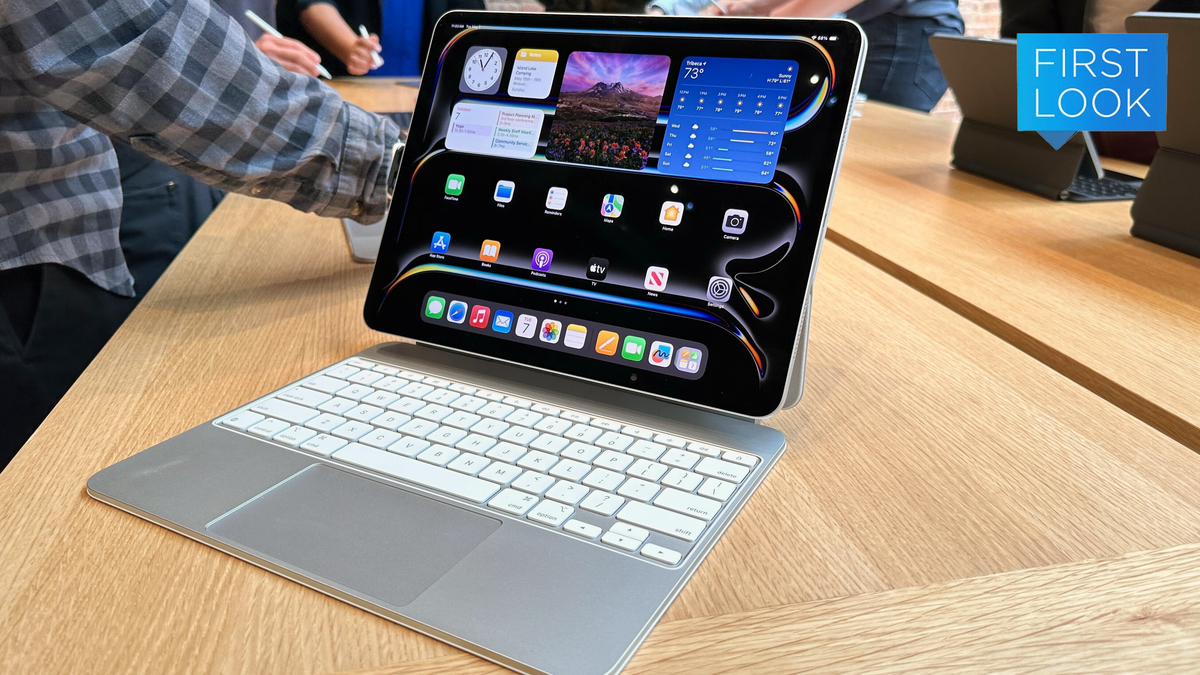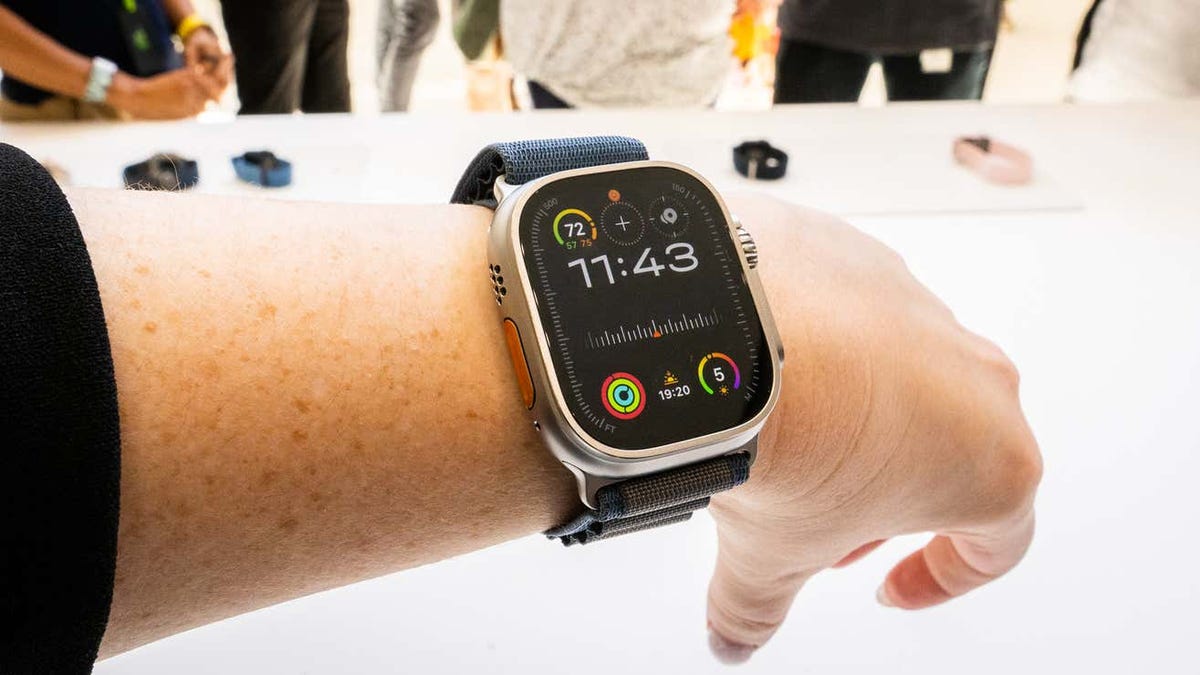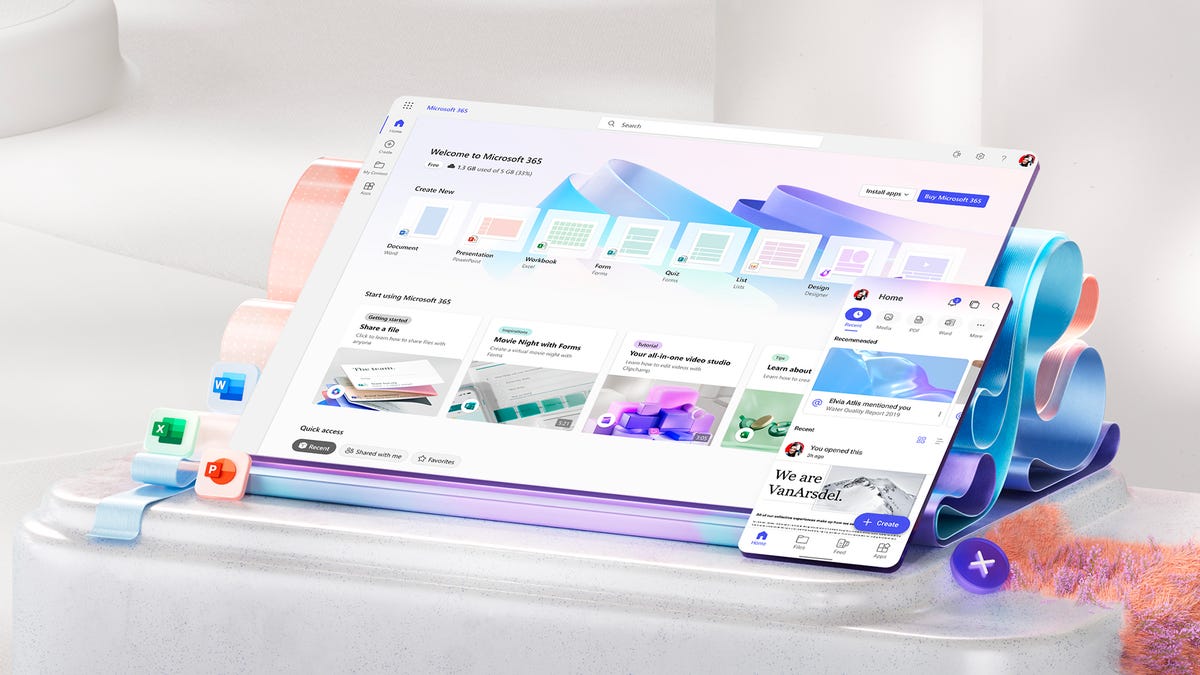Big tech’s big dreams of a corporate metaverse filled with virtual reality workplaces aren’t quite dead yet, at least according to Microsoft. The Redmond, Washington tech giant finally unveiled its 3D Mesh integration for Microsoft Teams, offering a new wave of generic-looking, legless avatars for making work meetings a fair bit more awkward.
As envisioned by Microsoft, this new Teams Mesh integration essentially lets users access 3D avatars, then stick them in pre-built 3D office spaces that include such incredible locales as a small outdoor auditorium or a futuristic lakeside home stuffed deep in the forest, where ostensibly nobody is around to hear you scream.
Companies can add logos to banners and play in-house videos on TVs scattered within those spaces. You can float around these drab, corporate spaces with either a Meta Quest headset or simply your avatar through a PC.
The Mesh environments are accessible straight through the Teams UI by going through the “View” tab and selecting the “immersive space (3D) option. The system uses spatial audio to mimic the ability to have sequestered conversations within these 3D environments. There are also a few games built into these environments, including cornhole. If the dull faces of the 3D avatars aren’t helping you express your excitement, you can use emoji-like live reactions just like in the 2D Teams.
All this is available for those companies paying for one of the Microsoft Teams business plans. Microsoft also allows companies to create environments and spaces with a Unity toolkit. However, they’ll need a Microsoft Teams Premium license, as mentioned in a previous Mesh blog last year.
Microsoft shared that a few companies like IT company Accenture and everybody’s favorite Gulf of Mexico oil spill cleanup crew BP were making use of these new Teams features, though don’t worry, they were using it to promote its offshore wind projects, not the billions it makes on fossil fuels. The new 3D Teams environments were created for team members working remotely to have shared space and in-person camaraderie without any of the headache and cost of flying folks to the same locale for a company retreat.
What’s still missing? Well—for one—legs. Meta’s Horizon Worlds avatars finally gained some bipedal integration last year, though that still hasn’t completely fixed how awkward these human facsimiles seem in-game. When Microsoft first shared its vision for Mesh, it was back when the “metaverse” was Silicon Valley’s big-money obsession, before that was inevitably replaced with generative AI. Microsoft initially imagined folks wearing Hololens headsets working around fake holographic tables, collaborating in a shared space as if everybody truly stood in the same room, all powered by the Azure cloud platform. We’re not quite there yet.
It’s unclear if we’ll ever get there. Last year, things weren’t quite working out for Microsoft’s VR ambitions. Early in 2023, the company cut 10,000 global employees, which took a big chunk out of its Hololens and other VR departments. Microsoft had previously acquired the longtime VR platform AltspaceVR. Still, by this time last year, the Redmond company squashed the team, shuttered its long-standing social VR space, and had all remaining team members moved over to work on Mesh.
Microsoft’s VP of Teams, Nicole Herskowitz, wrote in the Wednesday blog post that “the way we work has changed.” As much as that might be true in that far more folks are doing their jobs from the comfort of home, it hasn’t shifted how or when the work gets done. With the Teams Mesh integration, virtual meetings that already had that “this could have been an email” vibe will become exhausting.








